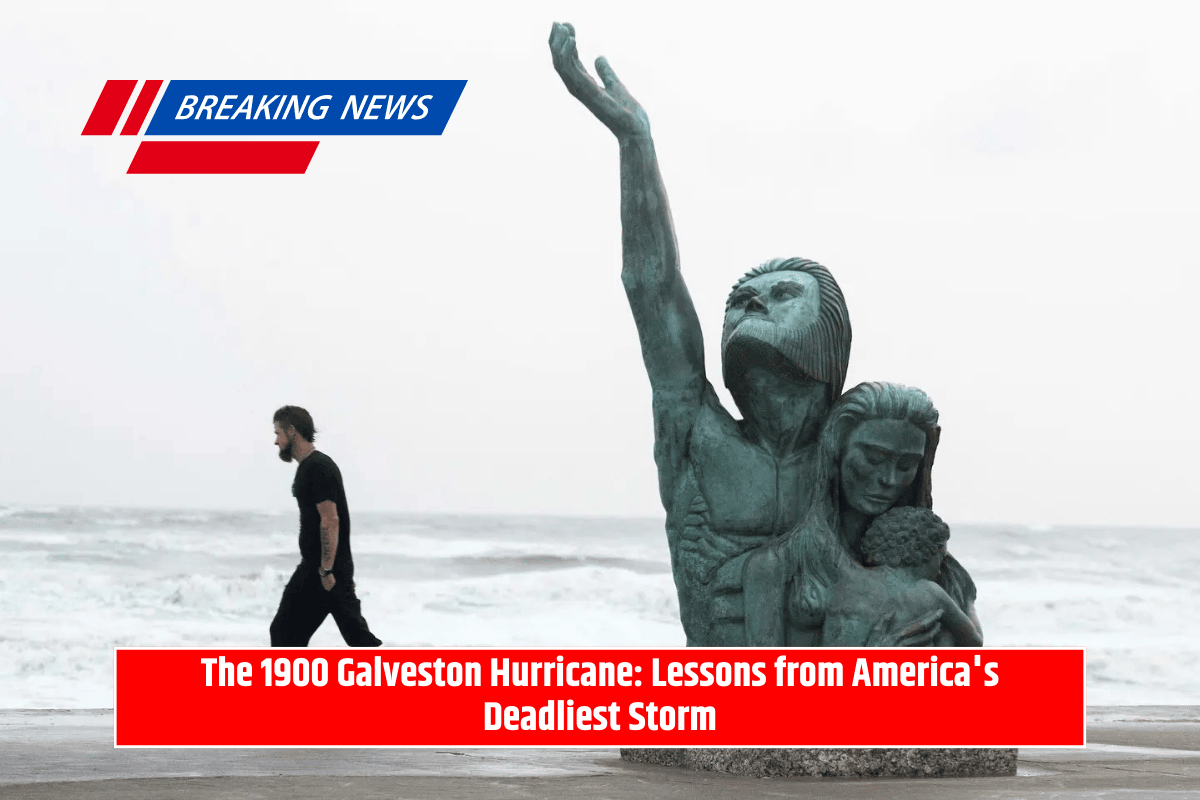On September 8, 1900, Galveston, Texas, faced a disaster like no other. A massive hurricane struck the island city without warning, wiping out homes, businesses, and lives. It remains the deadliest natural disaster in U.S. history, with an estimated 8,000 to 12,000 people losing their lives.
Even today, 125 years later, the storm serves as a powerful reminder of nature’s fury and the dangers of ignoring warning signs.
How Galveston Became a Victim of the Storm
Back in 1900, Galveston was booming. It was one of the richest port cities in the South, known as the “Wall Street of the Southwest.” But on that fateful day, the city went from thriving to destroyed overnight. Many experts now believe that much of the loss could have been avoided if people had known the storm was coming.
Dr. Hal Needham, a well-known hurricane expert and Galveston resident, says the real danger was not the wind, but the water. The storm surge — a wall of seawater pushed by the hurricane — flooded the entire city, causing most of the destruction.
“People often think hurricanes are just about strong winds,” Dr. Needham said, “but water is what kills and causes the most damage.”
Why the 1900 Hurricane Was So Deadly
Although the storm’s winds would rank as a Category 3 or 4 today, it wasn’t the strongest ever recorded. Its storm surge of nearly 16 feet didn’t even make the top 10 in U.S. history. What made this hurricane so tragic was where it hit — a busy, low-lying island city that had no seawall and was completely unprepared.
Galveston had no proper warning system in place. Local weather chief Isaac Cline failed to predict the storm in time, despite being one of the top meteorologists of the era. People didn’t take the threat seriously, and when the storm arrived, it was too late to run or hide.
The Missed Warnings from Indianola
Even before 1900, there were warning signs. The coastal town of Indianola in Calhoun County, once a major port, was destroyed by hurricanes in 1875 and 1886. After the second storm, the town was abandoned. Galveston should have learned from this and taken steps to protect itself.
City leaders had talked about building a seawall, but they never acted. They were too confident in the city’s success and believed a major hurricane could never hit them. Even Isaac Cline publicly stated that Galveston was safe from total destruction — a claim that investors loved and people believed.
“There was really a choice to ignore the risks,” said Dr. Needham. “And Galveston paid the price.”
How the Disaster Changed Texas Forever
After the hurricane, Galveston’s influence started to fade. Houston stepped up and developed the Houston Ship Channel, becoming the region’s new economic powerhouse. Meanwhile, Galveston spent years rebuilding.
Engineers eventually constructed an 8-foot seawall and raised parts of the city by up to 17 feet. This massive effort took eight years but helped protect the city from future storms.
Modern Lessons from a 125-Year-Old Storm
Dr. Needham believes that many people today still make the same mistake as Galveston did in 1900. They see a hurricane hit another part of the Gulf Coast and assume they’re safe.
But hurricanes are unpredictable. Storms like Laura and Ida in recent years could have easily taken a slightly different path and devastated Houston or Galveston instead.
He also warns that storms are now growing stronger very quickly — sometimes jumping a full category within 24 hours before landfall, like Hurricane Beryl. This means people may have less time to prepare than they think.
“Don’t let your guard down just because the season started slow,” he said. “We need to be ready. Always.”
The story of the 1900 Galveston hurricane is not just history — it’s a warning. Overconfidence, poor planning, and ignoring past lessons can lead to tragic consequences.
As hurricane seasons become more unpredictable and intense, it’s more important than ever for communities along the Gulf Coast to stay alert, act early, and never assume a storm won’t come their way. Galveston’s past holds powerful lessons for our future, and we can’t afford to forget them.
